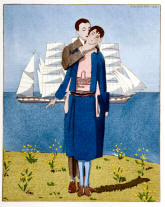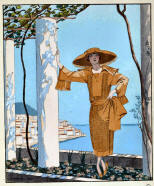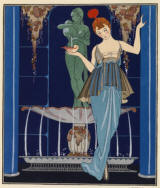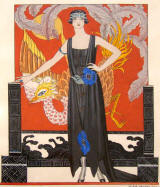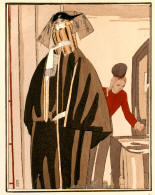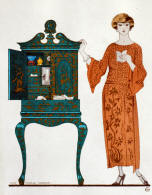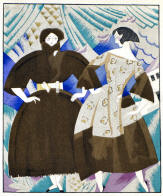The Gazette
was a leading
fashion
magazine,
published in France from
November 1912 to 1925. Founded
in 1912 by Lucien Vogel, the
magazine covered the latest
developments in
fashion,
lifestyle, and
beauty.
In the USA, the magazine was
issued as the Gazette du Bon
Genre. Both titles roughly
translate as "Journal of Good
Taste" or "Journal of Good
Style."
The magazine
strove to present an elitist
image to distinguish itself from
its many competitors. It was
available only to subscribers
and was priced at a steep 100
francs per year, or $425.61 in
today's money. The magazine was
published on fine paper. The
magazine signed exclusive
contracts with seven of Paris's
top couture houses –
Madeleine Chéruit,
Georges Doeuillet,
Jacques Doucet,
Jeanne Paquin,
Paul Poiret,
Redfern & Sons,
and
Charles Worth
– so that the designers'
fashions were shown only in the
pages of the Gazette.
After World War I, a select
group of designers were added –
Étienne Drian,
Gustav Beer, Kriegck, Larsen,
and Martial & Armand. The
magazine's title was derived
from the French concept of
bon ton, or timeless good
taste and refinement.
The magazine also
aimed to establish fashion as an
art alongside painting,
sculpture, and drawing:
according to the magazine's
first editorial, "The clothing
of a woman is a pleasure for the
eye that cannot be judged
inferior to the other arts."
To elevate the
Gazette's literary
status, the magazine featured
essays on fashion by established
writers from other fields,
including novelist
Marcel Astruc,
playwright
Henri de Regnier,
decorator
Claude Roger-Marx,
and art historian
Jean-Louis Vaudoyer.
Their contributions ranged in
tone from irreverent to ironic
and mocking.
The centerpiece
of the Gazette was its
fashion illustrations. Each
issue featured ten full-page
fashion plates (seven depicting
couture designs and three
inspired by couture but designed
solely by the illustrators)
printed with the color
pochoir
technique.
It employed many
of the most famous
Art Deco
artists and illustrators of the
day, including
Georges Barbier,
Erté
(Romain de Tirtoff),
Paul Iribe,
Pierre Brissaud,
André Edouard Marty,
Thayaht
(Ernesto Michahelles),
Georges Lepape,
Edouard Garcia Benito,
Soeurs David
(David Sisters),
Pierre Mourgue,
Robert Bonfils,
Bernard Boutet de Monvel,
Maurice Leroy,
and
Zyg Brunner,
who all, rather than simply
drawing a mannequin in the
outfit like most previous
illustrators, depicted the model
in various dramatic and
narrative situations.
(From
Wikipedia, the free encyclopedia).
|


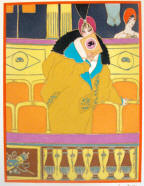
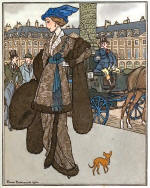
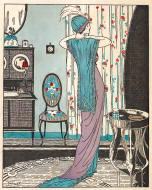
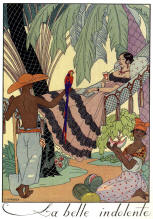
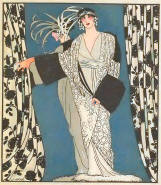

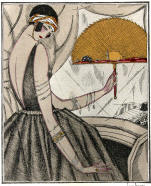
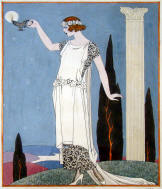
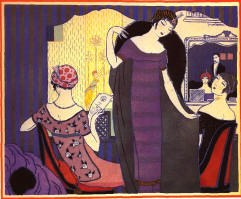 This superb Art Deco style French
monthly fashion Magazine from the first
quarter of the 20th Century
has now been scanned for download
complete with all the beautiful
illustrations it was famous for. Richly
illustrated throughout, the following 10
Volumes are included on disc, making
this the biggest collection of its kind
(and also the lowest priced)
This superb Art Deco style French
monthly fashion Magazine from the first
quarter of the 20th Century
has now been scanned for download
complete with all the beautiful
illustrations it was famous for. Richly
illustrated throughout, the following 10
Volumes are included on disc, making
this the biggest collection of its kind
(and also the lowest priced)
